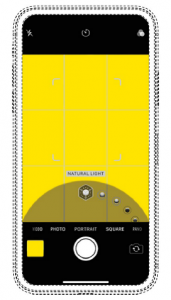New Graphical User Interface (GUI) Protection in Japan
Under Japanese law, graphical user interfaces (GUIs) are traditionally protected by the Patent Act in the same manner as other technologies. For example, published Japanese Patent Application No. 2019-050004, assigned to Apple, Inc., discloses an electronic device that displays a special user interface. In thisapplication, the special user interface displays different interface layers depending on different touch inputs to a touchscreen.
Meanwhile, in 2016, the Japan Patent Office (JPO) revised the Design Examination Guidelines to make clear that Design Act protects displayed images that are necessary for performing functions of articles (corresponding to “manufactured articles” set forth in U.S. patent law) and are also stored in the articles. In particular, icons in smartphone GUIs can be protected by the Design Act, while gaming content, images shown only for decorative expression, and dramatic content such as movies would be protected by the Copyright Act and not the Design Act.
In another example, Japanese Registered Design No. 1,633,582, also assigned to Apple, Inc., is a partial design of an image used for operating a camera on a smartphone. As shown in the drawing below, a semicircular portion located in a lower portion of a screen is the registered design.  Japanese Registered Design No. 1,633,582, Front View
Japanese Registered Design No. 1,633,582, Front View
Thus, the current Design Act protects only images that are displayed and stored in articles, and infringing acts are limited to making, using, etc. of the articles related to a registered design. However, with the increasing number of services implemented using GUIs, tying design protection to articles cannot provide sufficient protection for GUIs in certain situations.
Under these circumstances, since August 7, 2018, the JPO is inviting suggestions about protection of image designs on their website. Specifically, the JPO requests feedback regarding whether the following types of images should be protected by the Design Act:
(1) Images not stored in articles (e.g., images provided by cloud servers, images provided over networks, etc.);
(2) Images displayed on other types of objects besides the articles (e.g., images projected on a wall or human body, images displayed in augmented reality or virtual reality, etc.); and
(3) Images unrelated to functions performed by the articles (e.g., decorative images, content images, etc.).
The JPO also requests feedback regarding whether uploading protected images to cloud servers and/or providing software that includes the protected images via networks should amount to infringement.
Therefore, many commentators on this development expect the scope of protection offered by the Design Act to be extended in the next revision so that image designs can receive stronger protection. Moreover, the current Design Act does not protect a series of images associated with screen transitions even if such images are noticeable to a user. Many commentators also hope that the Design Act will be further revised so that images associated with screen transitions will become available for design protection.
Image designs described above can be protected also by the Copyright Act and the Trademark Act. However, because the Copyright Act requires creativity as a registration requirement, even if a copyright is registered for the image designs, the scope of protection may not always be definite as to what elements of the image designs are actually protected. Meanwhile, the Trademark Act requires using a design in association with goods/services as to distinguish those goods/services from those of other manufacturers/retailers. If an image is used in connection to a device’s function instead of identifying the source of goods or services, no trademark registration is possible. Thus, most of the displayed images necessary for performing functions of articles would not be protected under the Trademark Act.




